Today we’re going to take a look at an amazing new brand of memory cards and card readers from ProGrade Digital. I’ve been very impressed with them, and I’m sure you will be too!
ProGrade Digital contacted me many months ago now, to see if I would like to try their new line of high-quality memory cards, and as I wrote my reply, I realized that they did not make Compact Flash cards. At the time, Compact Flash was my preferred memory card type, but as we’ll see, this was based on old information and a lack of understanding of current technology on my part. Either way though, at the time I thought that there were no products available that I use, so we put the conversation on the back-burner for a while.
Then, I decided it was time to get my first mirrorless camera, and bought the EOS R, and with that using the SDXC format memory cards, it was the perfect chance to evaluate ProGrade Digital’s cards, so I jumped on the phone to them and had a few types of cards sent over to Japan for me to test. In the spirit of full disclosure you should know that I kept the two cards and workflow reader that I was sent, but I’d also like you to know that I have since bought a third card from Amazon.co.jp and I’m actually using that as my main card now, so I’ve voted with my dollars, or yen, as the case may be.
ProGrade Digital SDXC Cards
So, let’s take a look at these cards, and how they stood up to my tests. Testing memory cards must be broken into a number of areas, as no one aspect can truly help us to evaluate a card. The main areas that I am concerned with are read and write speeds, the card’s ability to store my images fast enough to not slow down my camera, and reliability. The first two are relatively easy to test, and we’ll get to these results in a moment, but first let me talk about reliability and how I tested this.
Reliability
In my opinion, the only way to test the reliability of a memory card is to use it, day in, day out, in the field. This is the reason that you haven’t seen a review of these cards until now, despite me taking delivery of them in December 2018. I needed to use the cards in the field, to ensure that they weren’t going to break on me. In my 19 years of shooting digital, I’ve actually had very few issues with cards. I attribute this
I actually did have problems with images getting corrupted when I first started shooting digital in 2000, and someone at Canon told me that deleting images randomly from the card and then continuing to shoot with it can cause problems, so I’ve just not done it since. It’s hard to say of course if it’s because of these things that I have had so few issues, but I can’t imagine it’s hurt in any way either.
I did have a Sandisk card develop a fault a couple of years ago, and it turns out that the card had literally become defective and needed to be replaced, but that was the only time that this happened to me in 19 years, so I have a pretty good track record. I should mention though, that I have mainly used Sandisk and Lexar cards, with a couple of Transcend cards thrown in for good measure.
Compared to 19 years of shooting, I do have a relatively short frame of reference to draw from for this review, but I used a 256GB ProGrade Digital UHS-II, U3, CLASS 10, V90 card for all three of my Japan winter tours, shooting a total of 16,000 images, and so far I have not had any problems with them.
One new thing that I have been doing on the advice of the ProGrade Digital team, is to perform a Low-Level Format, by turning on the checkbox on the Format screen on my camera whenever I format the cards.
So, at this point in time, I have no concerns about the reliability of these cards. They’ve securely saved 16,000 of my images over the last few months, and I see no reason why they won’t continue to do so moving forward.
Read/Write Speed Tests
I have to admit, when it comes to speed testing these memory cards, I initially completely missed the verbiage on the ProGrade Digital website that adds important information about the cards. The speed written on the face of the cards is apparently only the Read speed. The Write speed is different. Sometimes different to the point that you really wish the manufacturers of these cards would print on the card along with the much higher Read speed.
For example, the V90 SDXC cards that I have are rated at 250 MB/s read speed, and 200 MB/s write speed. That’s not a huge difference, and my tests actually showed that the write speed was much higher at 238 MB/s so the difference is minimal.
The V60 SDXC cards though have a much larger difference, with their read speeds up to 200 MB/s, but their write speeds are only supposed to be up to 80 MB/s. Again, in my tests, the write speed was higher at 98 MB/s and the read speed was spot on at 200.2 MB/s.
Anyway, I grabbed all of my latest model cards and did some comparisons pitching my new ProGrade Digital cards against my latest Sandisk Compact Flash cards and a new Transcend SDXC card that I use in my Zoom H6 digital recorder. I have also seen people shooting digital cameras with the small MicroSD cards in the adapter, and although this works, it’s generally going to slow down the camera, so I included a Sandisk Ultra MicroSDXC card and a Transcend MicroSDHC card for comparison.
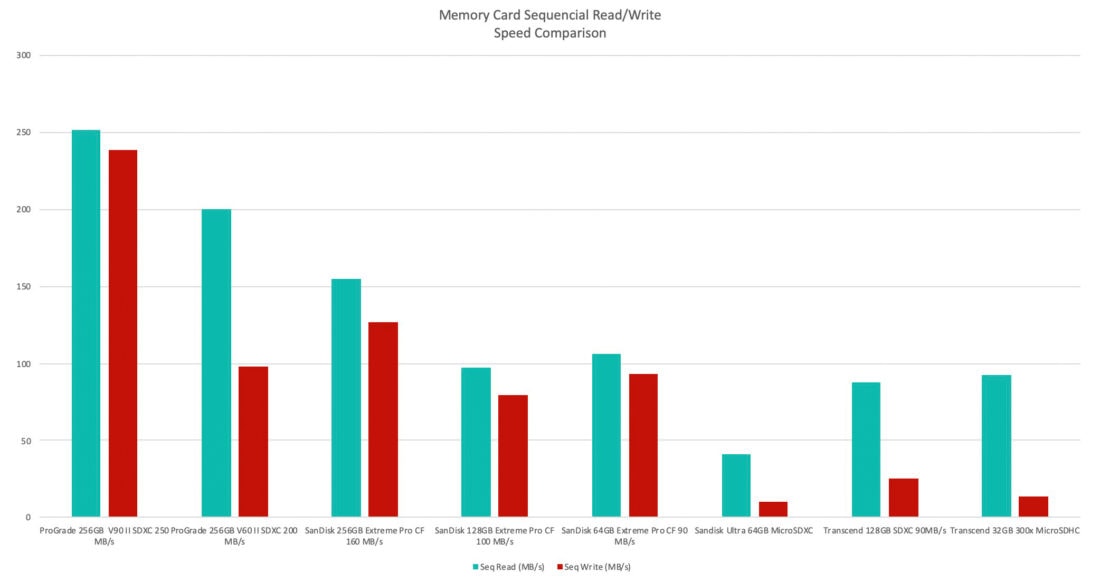
I was pleasantly surprised by these results. For many years I’ve considered SD cards to be much slower than Compact Flash cards, and for a while I believe that was true, but as you can see from these results, the read speeds of the ProGrade Digital cards are much faster than my latest Sandisk Compact Flash cards, although I believe that as of April 2019, at 160MB/s, the Extreme Pro cards that I tested are Sandisk’s fastest Compact Flash cards.
And for good measure, here is a merged screenshot of the test results for each card, so that you can check out the other data if that’s of interest to you.
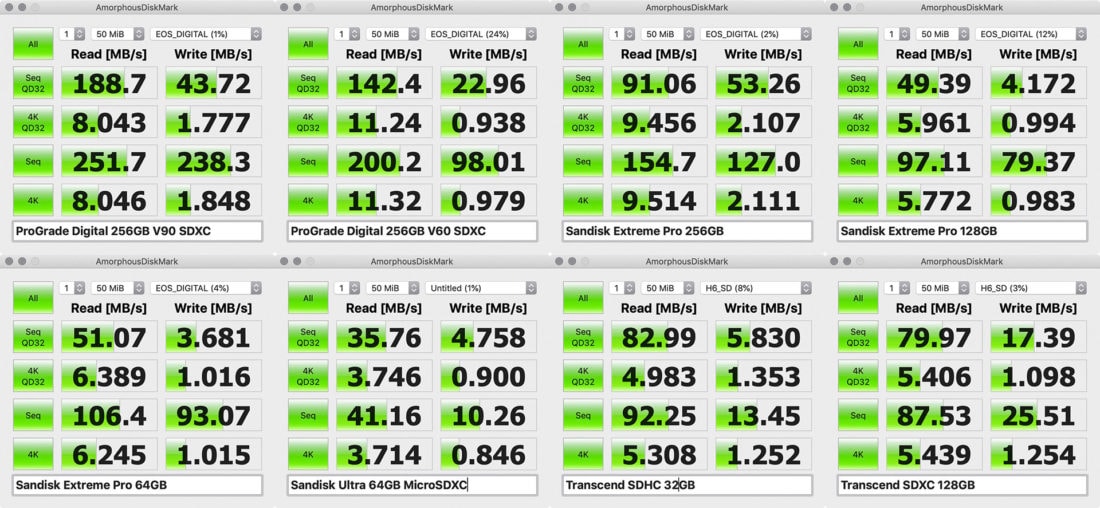
Thinking about it, if I’d known that these V90 SDXC cards were so much faster than my Compact Flash cards, I actually should have started using them in the SD slot of my 5Ds Rs when ProGrade Digital first contacted me. I was never really concerned about the speed of my Sandisk cards, but that’s because I thought I was using the fastest cards available. If I’d been using these faster ProGrade Digital SDXC cards the painfully slow frame rate of my 5Ds R might have improved a little. It’s hard to say now, as I’ve actually already sold them both.
Ability to Keep Up!
The other important aspect with regards to the speed of a memory card is its ability to keep up with the camera. I have traveled with people that complain that their cameras are not even close to the frames per second that they are supposed to be capable of, and there are sometimes reasons for this other than the speed of the card. For example, depending on your camera’s settings, the frame rate can drop if, like me, you tell the camera not to release the shutter unless it’s pretty sure that the image is in focus.
Often times though, when I check the cards of people that are unhappy with the speed of their camera, and its ability to empty a full buffer, they are using cheap and often very slow memory cards.
Of course, price is always a factor, and this is why ProGrade Digital offers
So, I did a relatively crude but useful test, by simply setting my camera in manual focus, with a fast shutter of 1/500 of a second, so that didn’t slow anything down, and just mashed down on the shutter until the buffer was full while taking a few readings I noticed for example that if I did bursts of around 10 to 15 frames the buffer took around four times longer to empty on the V60 card compared to the V90 card, but when I tried completely filling the buffer the difference was much less.
It took 10 seconds to empty a full buffer of 31 images on the V90 card, and around 12.5seconds on the V60 card, so if you think about how many times you are likely to fill your buffer completely, and how often waiting an extra 2.5 second for that buffer to completely empty is going to mess up your workflow, I don’t imagine the difference is going to be much of a problem.
I also
Same Price Worldwide!
But, being a complete hypocrite, I have never been able to get over my Mum’s advice of “If you’re gonna ‘
As a company, ProGrade Digital have decided to break the mold, and offer their cards at pretty much the same price in all countries that you can buy them from, and because they have no prices to protect from country to country, you can also simply buy them direct from the ProGrade Digital online store, and have them shipped to you. Of course, if you live in the US this doesn’t affect you in any other way than you can be happy that ProGrade are a cool company. If you live outside of the US though, this really is a breath of fresh air.
Historically the other memory card companies have and still do charge way more for their cards outside of the US. For example, my Sandisk 256GB Extreme Pro compact flash card is currently for sale for $340 at amazon.com and B&H. That same card on Amazon here in Japan costs $452! It’s actually been a while since I checked, and that difference seems less than before, so I think the big guys are taking a leaf out of ProGrade book, or maybe ProGrade has them running scared. Either way, this is a huge step in the right direction, and I hope that many other companies start to follow suit.
From what I hear from the ProGrade team, in addition to Amazon in the US, you can now buy their products from Amazon in Mexico, Canada, 27 countries in Europe, Japan, Australia, and they are currently in the process of launching in India and the UAE.

Workflow Readers
Before we wrap up this episode though, I have to tell you about what ProGrade Digital
The main reason I love this card reader is because it’s fast! Of course, I used it for all of the tests that we’ve done, but when I got to the hotel each evening during my recent winter tours, it literally only took a few minutes to transfer hundreds of images to my external SSD. Keeping in mind though, that I am using USB 3.1 Gen 2 connectivity on both my 13″ MacBook Pro and my iMac Pro, and that is much faster than USB 3.0, and my drive being a super fast Samsung X5 Solid State Drive makes a difference too, but transfer speeds are always only as fast as the weakest component, so having everything at the latest and greatest really helps me to appreciate the speed that this all provides.
The other thing that I love about the ProGrade Digital Workflow Reader that I have is that it has both a Compact Flash and SD card slot, and get this; you can transfer images from both slots at a time and the transfer speed doesn’t drop when you do that. I ran a test with two different speed test applications open, one running a test on my Sandisk CF card, and the other running a test one of my ProGrade Digital cards, and when I stopped one, the other didn’t change its speed at all. They just kept steaming along without batting an eyelid, and that is impressive.
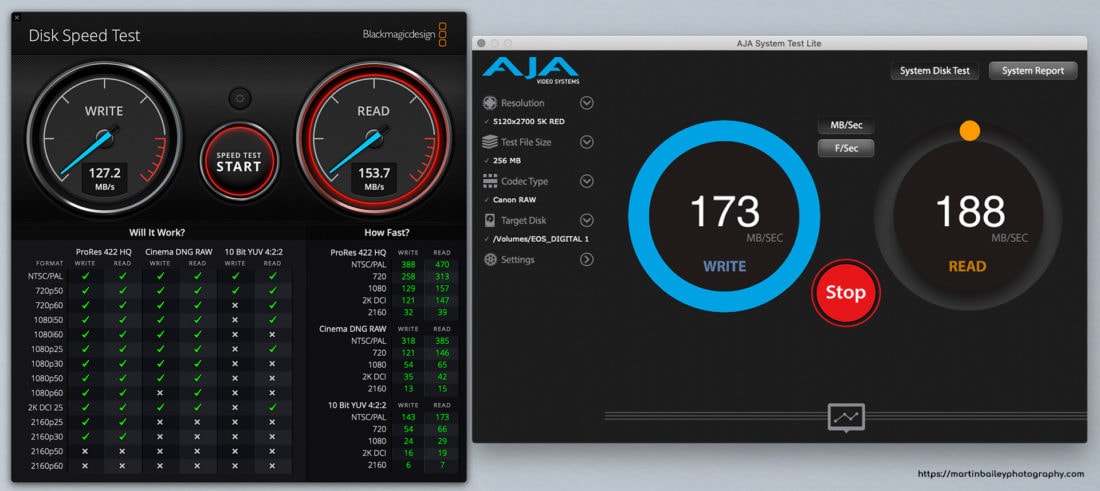
These workflow readers come in a number of configurations, so although I got the Compact Flash and SD card version, you can also get readers with dual MicroSD card slots, a CFast and SD slot, dual SD slots, and a single slot CFX card reader. Now that I’ve sold both of my Canon 5Ds R bodies and bought a second EOS R, I no longer own a camera that uses Compact Flash cards, so I’ll be getting a dual SD card reader the next time I place an order with Amazon Japan, and that will enable me to download images from two cards at the same time. When using software like Capture One Pro that can actually handle simultaneous imports, especially when it doesn’t slow the transfer down at all, this can be a huge time saver.
Check Out ProGrade Digital Products
Check out these card or Workflow Readers on your local Amazon store or on the ProGrade Digital website. They’re compact, incredibly fast, and even come with a little metal strip that you can attach to something and then clip the reader to it with the built-in magnet if you like. A great product to support an amazing line of memory cards from this wonderful new forward-thinking company.
That reminds me, I didn’t even mention that ProGrade are creating CFExpress, Micro SDXC and CFast cards in addition to the SDXC cards that I am now using. And when you consider that regular compact flash cards are now on their way out, I can understand their business decision to concentrate on these new technologies.
So, we’ll wrap it up there for this episode. Do check out ProGrade Digital’s products when you are in the market for a new memory card or reader. They’ve completely impressed me with their speed and quality, so I recommend their products with a massive thumbs-up.
Show Notes
Please buy with our affiliate links from B&H Photo or Amazon if you have found this review useful. Affiliate payments help to keep this podcast viable, without costing you anything.
B&H Photo: https://mbp.ac/pgd256v90
Amazon: https://amzn.to/2XUetjw
And of course, if you prefer, you can buy direct from the ProGrade Digital website here: https://progradedigital.com
Audio
Subscribe in iTunes to get Podcasts delivered automatically to your computer.
Download this Podcast as an MP3 with Chapters.
Visit this page for help on how to view the images in MP3 files.

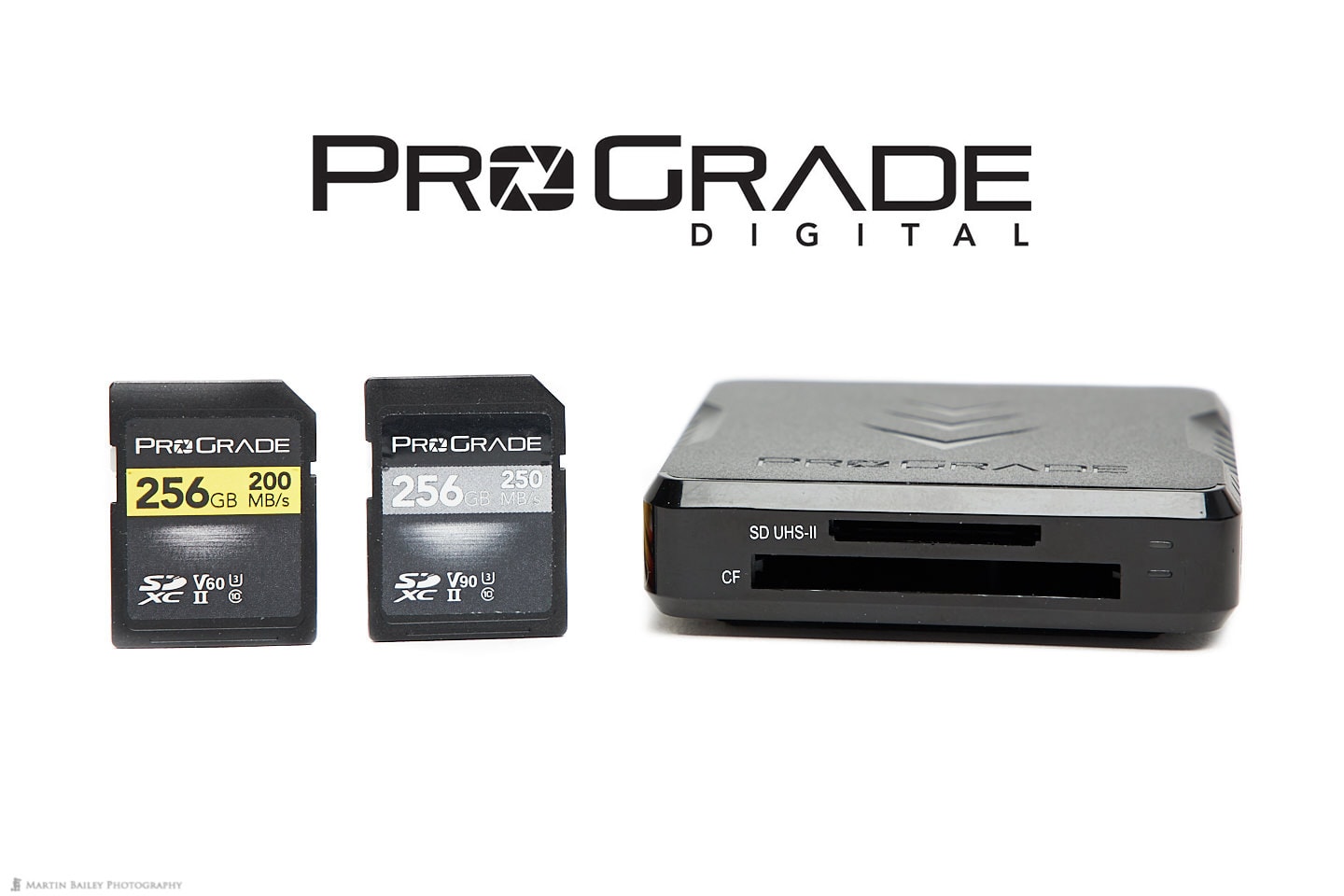
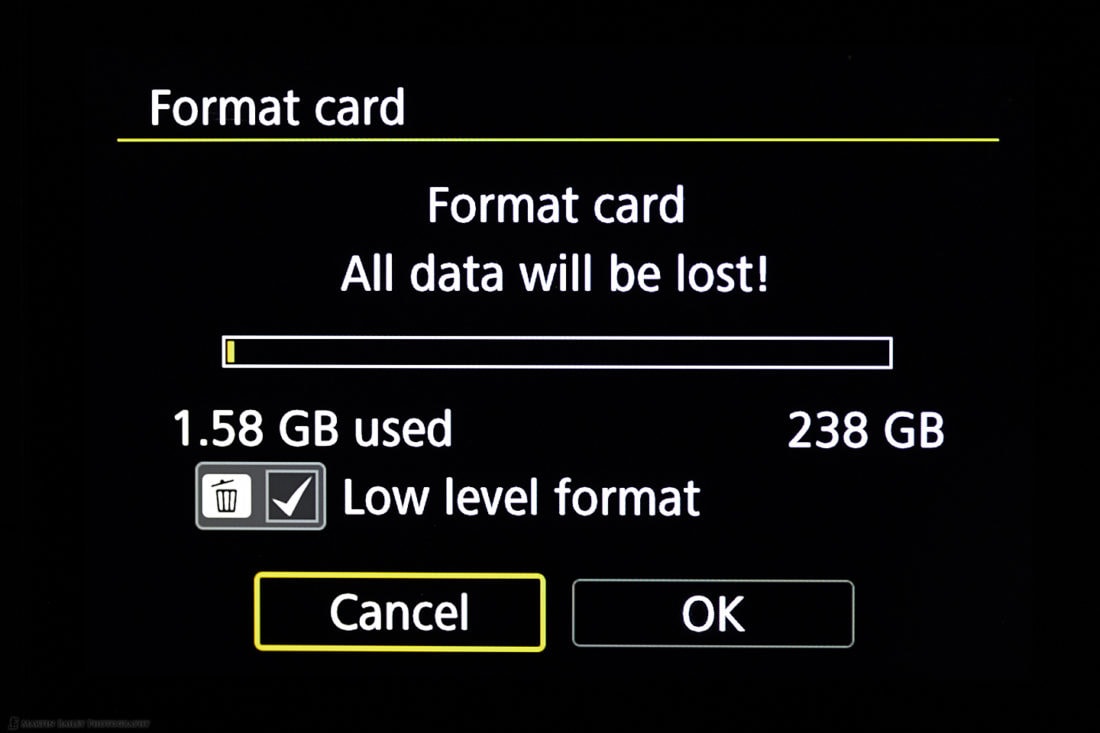

When I went from a Nikon D700 to D810 I bought a much faster and larger SDXC than my CF cards. I’m still not convinced they are built very tough for heavy use / abuse compared to the heavier duty metal shells of CF, but the speed was certainly appreciated–especially when offloading with a good card reader. Those were UHS-I cards at the time. More recently I’ve found myself doing it all over again with my D850, favoring XQD over SDXC for faster speed, although UHS-II is a worthier competitor. But I appreciate the heavier duty design and quality of XQD with the metal shell over the plastic SD cards. Nikon says they are adding CFExpress support to the D850, Z7, and Z6 with firmware updates soon, I doubt it will actually speed up the camera writes, but the reads would sure be fun with ProGrade Digital’s new card reader! 😀
I hope ProGrade Digital builds a 10Gbps USB 3.1 Gen 2 hub with a USB-C connector for their various modules. It would be a really nice upgrade to my aging Lexar hub, which is 5Gbps USB 3.0 and there are no modules for CFExpress for it. If you have an inside contact, can you pass that suggestion along?